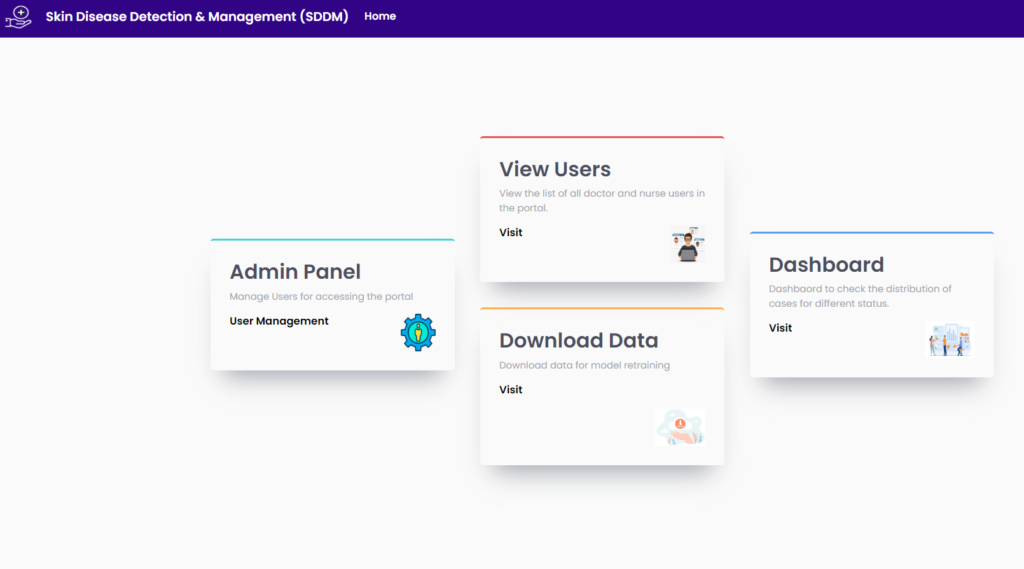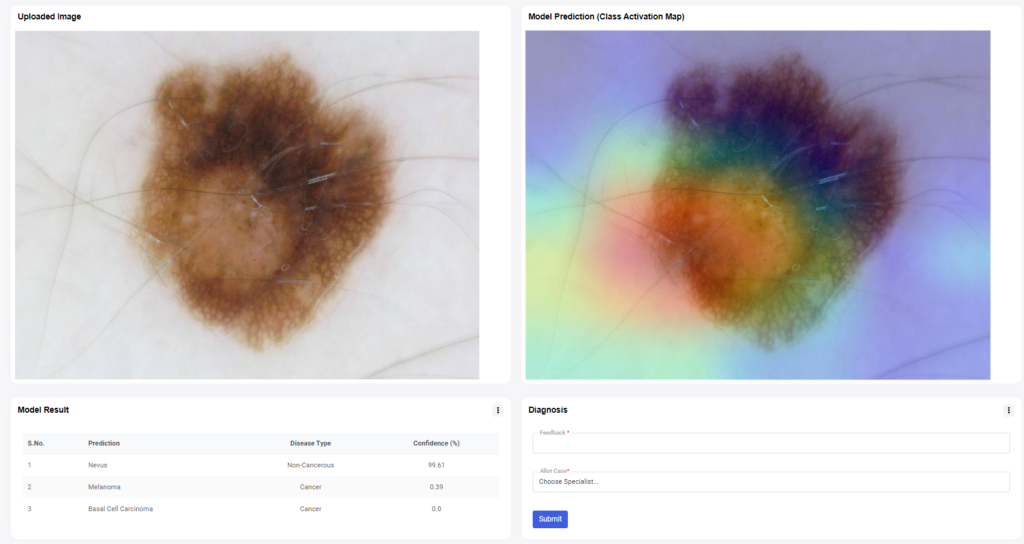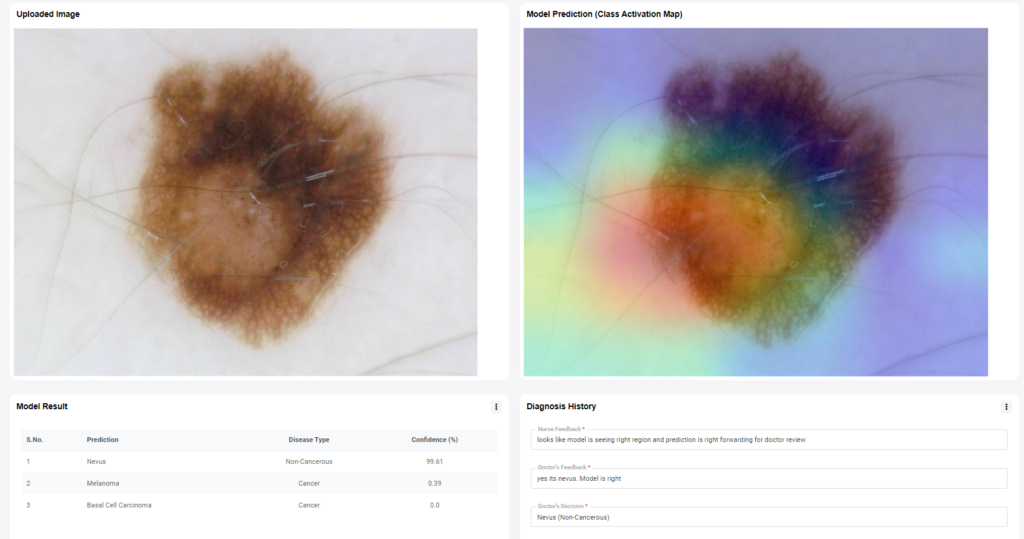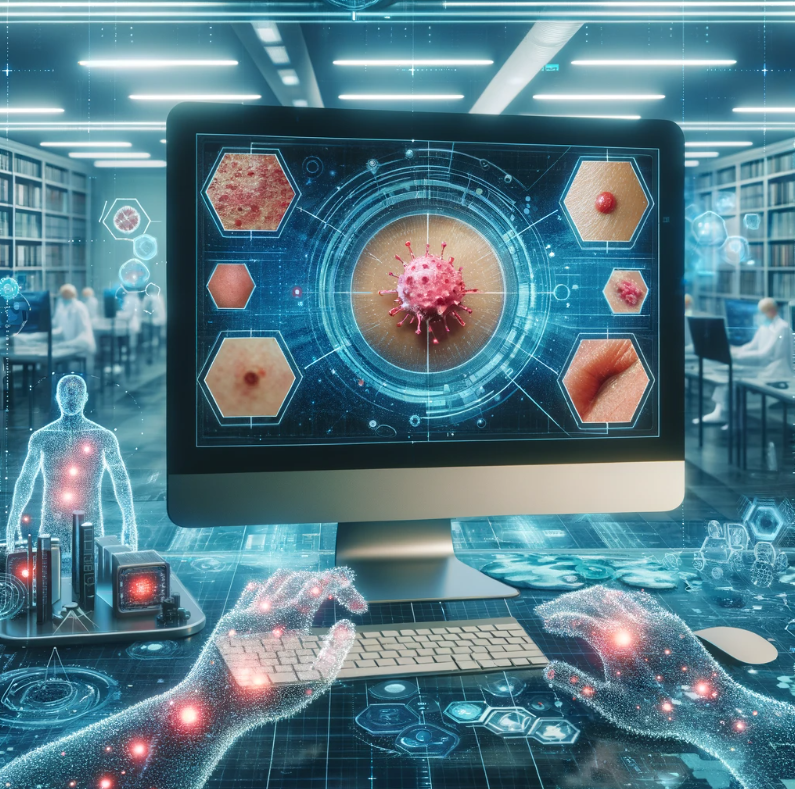Table of Contents
In the rapidly evolving world of healthcare technology, an innovative Skin Cancer Detection and Management System stands out, promising to transform the diagnosis and treatment of skin cancer within hospital environments. This article will showcase a skin cancer detection web app developed using Flask, Python, and a MySQL database. This web app is a beacon of hope for patients and a precision tool for healthcare professionals. Let’s delve into the intricacies of this system, exploring its functionality, user roles, and the profound impact it has on managing skin cancer cases.
A Comprehensive System with Diverse User Roles
This web app is ingeniously designed to cater to multiple user roles, including administrators, doctors, and nurses, each with distinct functionalities and responsibilities.
Admin Panel: The Nerve Center
At the heart of the system is the Admin Panel, a robust platform that allows for meticulous user management. Administrators can view a comprehensive list of users, toggle their active status, and download user data for further analysis.
The dashboard presents a bird’s eye view of the system’s metrics – from the number of registered doctors and nurses to the tally of cases and their statuses. It’s a quick glance at the system’s pulse, ensuring that administrators stay informed about the operational aspects.

Furthermore, the admin has access to a detailed list of all cases, enriched with information such as case ID, model prediction, and the associated healthcare professional. This feature not only fosters transparency but also facilitates efficient case management.

Fig 2. The Admin User panel for handling and managing different users
Nurses: The Frontline Warriors
Nurses have a pivotal role in this system. They can update their profiles, view reports, and importantly, make model predictions. Upon receiving a case, a nurse can view the lesion image, check the AI model’s prediction along with its confidence score, and provide their feedback before assigning the case to a dermatologist for further evaluation. This collaborative feature underscores the system’s commitment to accuracy and comprehensive care.

Doctors: The Decision Makers
Doctors, equipped with detailed insights from nurses and AI predictions, can make informed decisions on each case. They can view their allotted cases, examine the AI’s prediction and the nurse’s notes, and add their expert feedback. This collaborative approach not only enhances the diagnosis process but also streamlines the workflow, making it more efficient.

The Technological Backbone
The system’s technological infrastructure is worth noting. It uses a deep learning model for skin cancer prediction, ensuring high accuracy and reliability. In case you want to understand how we have trained skin cancer detection model you can visit this GitHub repo. Coupled with a MySQL database, the system ensures secure and efficient data management, from user details to case reports.
Enhancing Healthcare with AI
This Skin Cancer Detection and Management System exemplifies the potential of AI in healthcare, offering a user-friendly, efficient, and accurate solution for diagnosing skin cancer. It stands as a testament to how technology can enhance medical care, providing faster diagnoses and facilitating better patient outcomes.
For healthcare institutions looking to adopt this revolutionary system, the source code offers a valuable resource for integration into their operations. Those interested in acquiring the source code for this system can visit the provided link for purchase details, unlocking the potential to revolutionize skin cancer care in their facilities.
In conclusion, as we move forward into an era where technology and healthcare become increasingly intertwined, systems like these are not just innovations; they are essential tools in the fight against diseases like skin cancer. By leveraging AI and deep learning, we can make significant strides in diagnosing and managing health conditions more effectively, ultimately saving lives and improving the quality of care for patients around the globe.
